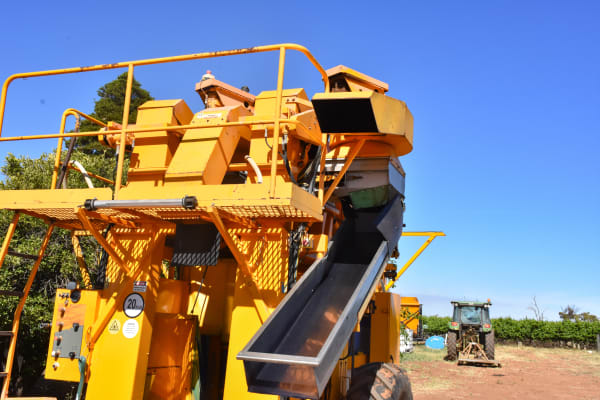WITH lush, green trees as far as the eye can see, and dark, sweet, zingy berries that grow undoubtably well in the harsh Riverland climate, there was little to mull over when a local grower changed from wine grapes to mulberries seven years ago.
For Peter Szabo, viticulturalist by trade and owner of Nockburra Creek Farm, cuttings from one backyard mulberry tree on his Kingston-On-Murray property was all it took to change the entirety of his harvesting business.
In the family’s effort to fund a holiday to Queensland by selling mulberries over a decade ago, Mr Szabo realised the fruit’s value after selling over $4000 worth of fruit from the sole tree.
In changing his farm and harvesting process from six acres of chardonnay grapes to 10 acres of mulberries, Mr Szabo said the project was “a massive experiment”.
“The whole thing from the ground up was very nerve-wracking and I wasn’t 100 per cent sure if it was going to work,” he said.
“My wife kept asking me ‘are you sure we can harvest with machines? Are you sure that trellis system is going to work?’
“I said ‘I don’t know, we’ll give it a go’. It was a bit of a jump into the unknown.”
The “jump” proved successful when Mr Szabo was able to modify his grape harvester to catch the ripe mulberries as they fell.
“We catch all the ripe fruit and a week later we come back and catch all the ripe fruit again,” Mr Szabo said.
“We keep going over and over, with a very light shake, and all the ripe fruit falls off.”
Though the yearly harvest – lasting five picks over a month – can be laborious, Mr Szabo said it is the only way.
We will end up, hopefully, producing 50 tonnes of fruit here on our property, and I would hate to handpick that.”
Currently, the trees produce between 20 and 25 tonnes of fruit, with the production set to double in size by next year once the younger trees mature.
Normally a “massive tree”, the trellised mulberries needed a pruning system developed by Mr Szabo to get the trees back to bare bones and allow them to be machine harvested year after year.
“We’ve implemented our specialised pruning program for them ourselves,” Mr Szabo said.
“It’s completely opposite to a normal vine prune. Once we finish harvesting, we will go through and prune everything off, right back to the branches.
“People go ‘What are you doing? You look like you’ve killed them’, because we just saw everything off and mulch it all up.
"That’s the only way we can manage it so it fits into the harvester.”
The variety of mulberry grown at Nockburra Creek Farm is hicks fancy – an elongated, black berry with purple juice that stains your fingers – and all 52 rows of trees originated from one backyard tree.
“I took all the cuttings and propagated them myself and planted the four acres (at the top of the property),” Mr Szabo said.
Then I took cuttings from those four acres and planted six acres down the back. The (backyard) tree just runs off of the overflow from the rainwater tank.
It gets no irrigation, and no fertiliser, and it crops its head off.
“(Hicks fancy) is a prolific cropper, it has prolific growth, is really well-suited to our region and uses a lot less water than the vines did.”
Operating one of Australia’s only commercial mulberry farms can include a bit of pressure, and Mr Szabo said the situation was “a bit of a mixed blessing” as his production levels increased.
“We are at a scale now that we have to be approaching larger people,” he said.
“With our industry, they have to be willing to take a chance as much as we are. I can grow this easily, it’s marketing that’s the difficult part.
“We’ve had to continually market ourselves and push our product. We are finally getting some traction with some bigger people as our production increases.”
Currently, the fruit is packaged into 20kg boxes, frozen as quickly as possible and sent away to various businesses to make juices, purees, gins and wines.
“Looking forward, we’re actually looking to do a bit more processing ourselves,” Mr Szabo said.
“It doesn’t make much sense to me when I could just puree here, pasteurise, stabilise and put it into whatever packaging fits into their production line.
“We really are targeting manufacturing the mulberry – if we can get rid of some of the packaging and process, we’ll do that as well.”








